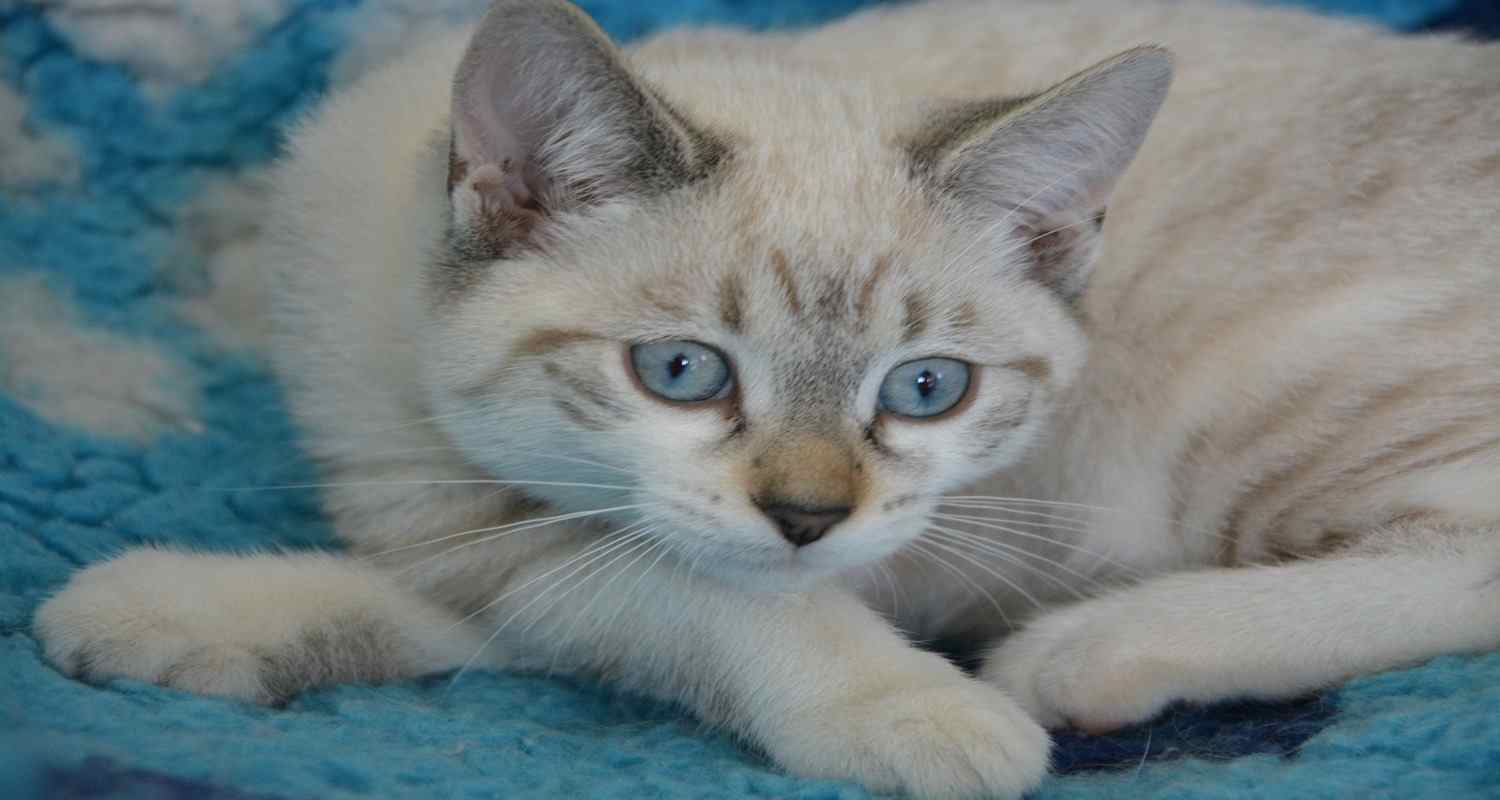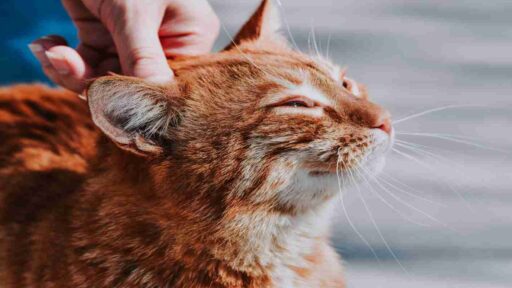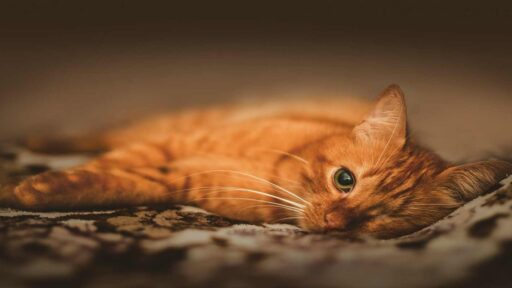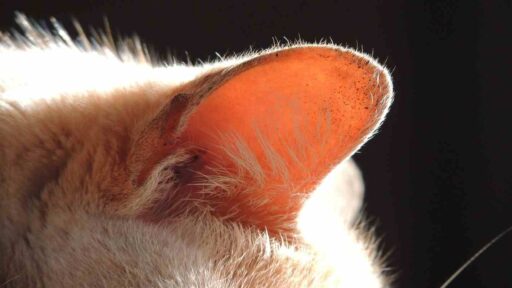What is a Cat with cross eyes?
“cat with cross eyes” refers to a cat whose eyes are misaligned, causing them to point in different directions. This condition is known as strabismus, where the eyes are not properly aligned with each other. Cross-eyed cats are generally able to lead normal lives, but in some cases, it may be associated with underlying health issues or genetic factors. If you have a cat with cross eyes, it’s advisable to consult the article below for a proper diagnosis and guidance on any necessary care.
Cat with cross eyes Symptoms
Symptoms of a cross-eyed or strabismic cat may include:
- Visible misalignment of the eyes: The most obvious symptom is when the eyes do not point in the same direction. One eye may appear to be looking straight ahead while the other deviates inward, outward, upward, or downward.
- Impaired depth perception: Strabismus can affect a cat’s ability to judge distances accurately, leading to difficulties in activities that require depth perception, such as judging the height of surfaces or distances when jumping.
- Squinting or blinking: Some cross-eyed cats may squint or blink more than usual, possibly due to the effort required to focus their eyes.
- Uncoordinated eye movements: The affected eye may not move smoothly or may exhibit involuntary movements (nystagmus).
- Potential underlying health issues: While some cats are born with cross eyes, it can also be a symptom of certain health problems or injuries. If strabismus develops suddenly, it may be essential to investigate the underlying cause.
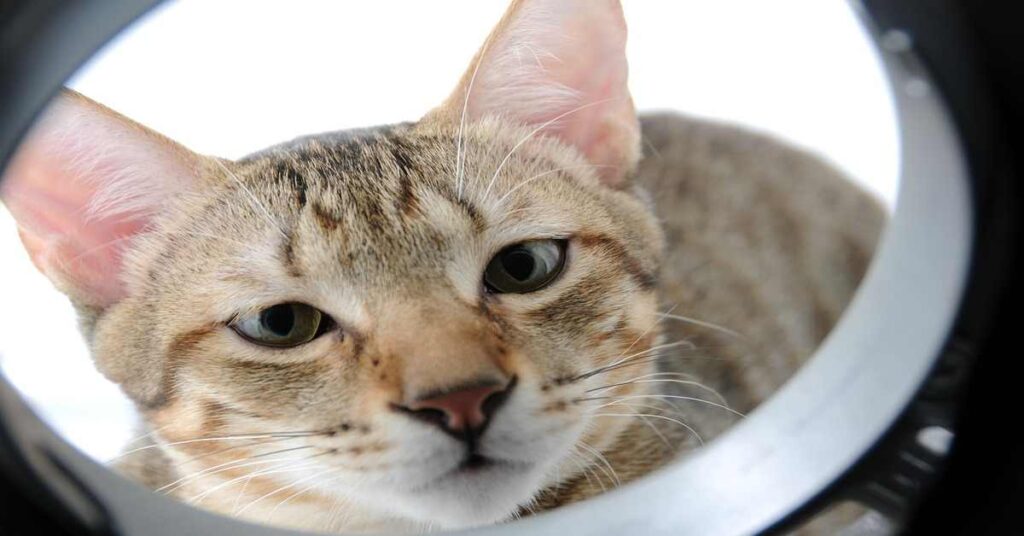
Cat with cross eyes causes
The causes of cross-eyes or strabismus in cats can vary. Some common factors include:
- Genetic predisposition:
- Certain cat breeds, like Siamese, Persian, and Himalayas, may have a genetic predisposition to strabismus.
- In these breeds, a certain degree of cross-eyes is sometimes considered a normal and accepted trait.
- Congenital factors:
- Cats can be born with strabismus due to abnormalities in the development of eye muscles or nerves during fetal growth.
- The misalignment may be apparent early in kittenhood.
- Nervous system disorders:
- Conditions affecting the nervous system, particularly the cranial nerves responsible for eye movement, can lead to strabismus.
- Neurological disorders, such as vestibular disease, may cause abnormal eye movements.
- Trauma or injury:
- Physical trauma to the head or eye region can damage the muscles or nerves controlling eye movement, resulting in strabismus.
- Injuries might occur due to accidents, falls, or fights with other animals.
- Underlying health issues:
- Eye infections, inflammation, or other ocular conditions can contribute to strabismus.
- Systemic health issues, like metabolic disorders, can also indirectly affect eye function.
- Idiopathic strabismus:
- In some cases, the exact cause of strabismus may not be identified, and it is referred to as idiopathic.
- Idiopathic strabismus implies that the condition arises spontaneously without an apparent underlying cause.
It’s important to note that the specific cause can vary between individual cats. If you observe signs of strabismus in your cat, consulting with a veterinarian is recommended for a comprehensive examination and appropriate diagnosis.
diagnostics of a Cat with cross-eyes
The diagnosis of cross eyes (strabismus) in cats involves a thorough examination by a veterinarian. Diagnostic steps may include:
- Physical Examination:
- The veterinarian will perform a comprehensive physical examination, observing the cat’s overall health and checking for any signs of discomfort or abnormalities.
- Eye Examination:
- A detailed examination of the eyes will be conducted to assess the degree of misalignment, check for any abnormalities in eye movement, and examine the overall health of the eyes.
- Neurological Evaluation:
- Since strabismus can be associated with neurological issues, the vet may conduct a neurological assessment to check for abnormalities in reflexes, coordination, and overall nervous system function.
- Medical History:
- Information about the cat’s medical history, including any recent injuries, changes in behavior, or underlying health conditions, will be crucial for understanding the context of the strabismus.
- Blood Tests and Imaging:
- In some cases, blood tests may be recommended to check for underlying systemic conditions. Imaging studies, such as X-rays or advanced imaging like MRI or CT scans, may be necessary to evaluate the structures of the head and eyes more closely.
- Genetic Testing (if applicable):
- If the cat belongs to a breed known for genetic predisposition to strabismus, genetic testing may be considered to identify specific genetic factors.
- Eye Pressure Measurement:
- In some instances, measuring intraocular pressure (IOP) may be performed to rule out conditions like glaucoma.
- Specialized Ophthalmic Examination:
- Referral to a veterinary ophthalmologist may be recommended for a more specialized examination, especially if there are concerns about the eyes that require expert evaluation.
Results
Once a diagnosis is established, the veterinarian can discuss treatment options and management strategies based on the underlying cause. Keep in mind that not all cases of strabismus in cats require treatment, especially if it is congenital and not associated with pain or other health issues. The approach to management will depend on the specific circumstances of each case.
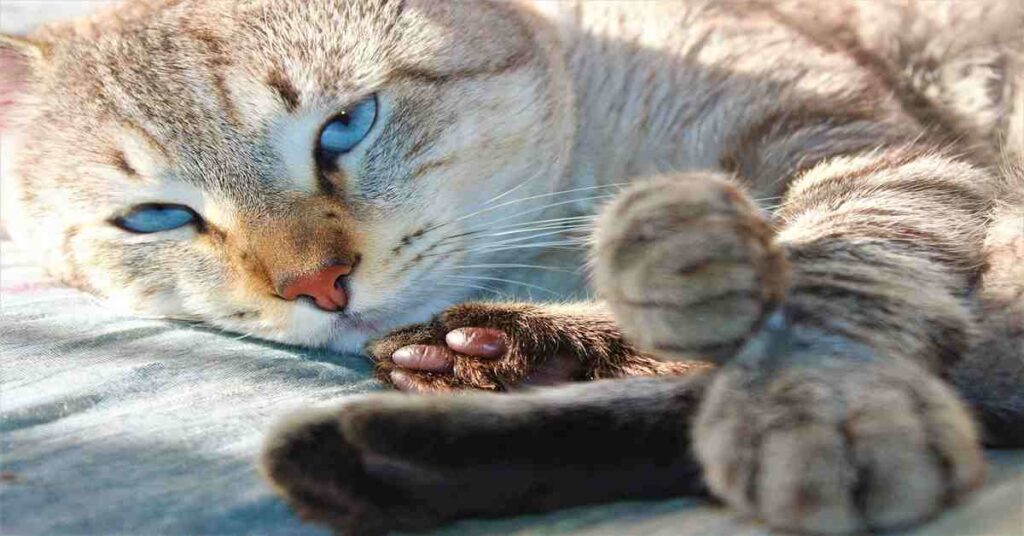
Cat with cross-eye treatments
The treatment of cross eyes (strabismus) in cats depends on the underlying cause, severity of symptoms, and the impact on the cat’s overall health. Here are some potential treatment approaches:
- Observation:
- If strabismus is congenital and not causing discomfort or hindering the cat’s quality of life, the veterinarian may recommend observation without specific intervention.
- Medical Management:
- If strabismus is related to an underlying health issue, such as an eye infection or inflammation, the vet may prescribe medications to address the specific condition.
- Surgery:
- In some cases, especially if the misalignment is severe or causing vision problems, corrective surgery may be considered.
- Surgical procedures aim to adjust the position of the eye muscles, aligning the eyes more accurately. However, surgery may not be appropriate for all cases.
- Management of Underlying Conditions:
- If strabismus is a symptom of a systemic condition, treating the underlying health issue may help alleviate or improve the eye condition.
- Environmental Adaptations:
- Owners can make environmental adjustments to accommodate a cat with strabismus. For example, providing easily accessible food and water bowls, avoiding sudden changes in the environment, and minimizing potential hazards can contribute to the cat’s well-being.
- Regular Veterinary Check-ups:
- Cats with strabismus may benefit from regular veterinary check-ups to monitor their overall health and the status of their eyes.
It’s important to note that not all cases of strabismus require treatment, especially if the condition is congenital and not causing discomfort. The decision on how to proceed should be made in consultation with a veterinarian, who will consider the specific circumstances of the individual cat.
If you suspect that your cat has strabismus or any eye-related issues, seek prompt veterinary attention for a proper diagnosis and appropriate guidance on the most suitable course of action.
Cat with cross eyes FaQs
What does it mean if a cat is cross-eyed?
If a cat is cross-eyed, it means its eyes don’t point the same way. This is called strabismus. The eyes can be misaligned from birth or later in life. In some cat breeds, being cross-eyed is normal. But it could also indicate health issues. If you notice this in your cat, see a vet for advice. They’ll check and suggest what to do based on your cat’s situation.
What breed of cat has crossed eyes?
Crossed eyes can occur in various cat breeds, but it’s more commonly associated with certain breeds that are genetically predisposed to this trait. The most notable examples include:
- Siamese Cats: Crossed eyes are relatively common in Siamese cats. In fact, some degree of strabismus is considered a breed characteristic in Siamese cats, and it’s even accepted in show standards.
- Himalayan Cats: Similar to Siamese cats, Himalayans, which are a colorpoint breed derived from the Siamese, can also exhibit crossed eyes.
While these breeds may have a higher prevalence of crossed eyes, it’s essential to note that not all individuals within these breeds will display this trait. Additionally, crossed eyes can occur in cats of other breeds or mixed-breed cats due to various factors, including genetics and underlying health conditions.
What does it mean if my cat has a lazy eye?
If your cat has a lazy eye, it means one eye looks less active. This can be due to genetics, weak eye muscles, or nerve issues. An injury or health condition might also cause it. If you see this in your cat, go to the vet. They’ll check and suggest what to do based on your cat’s situation.
How do you fix cross eyes naturally?
You can’t naturally fix cross eyes in cats. It’s often due to genetics or other issues. If you’re worried, ask a vet for advice. They’ll check and suggest what to do for your cat. Following their recommendations is important for your cat’s well-being.

